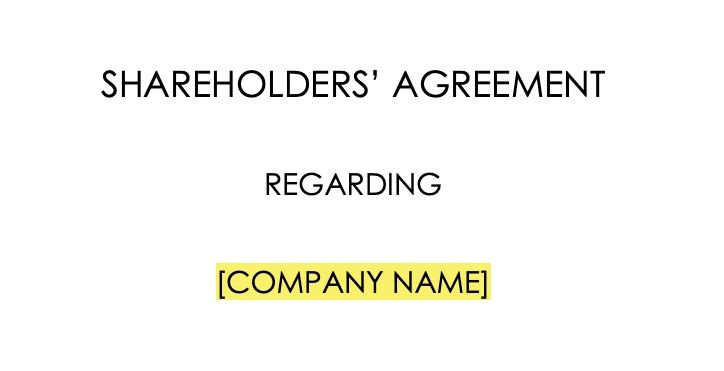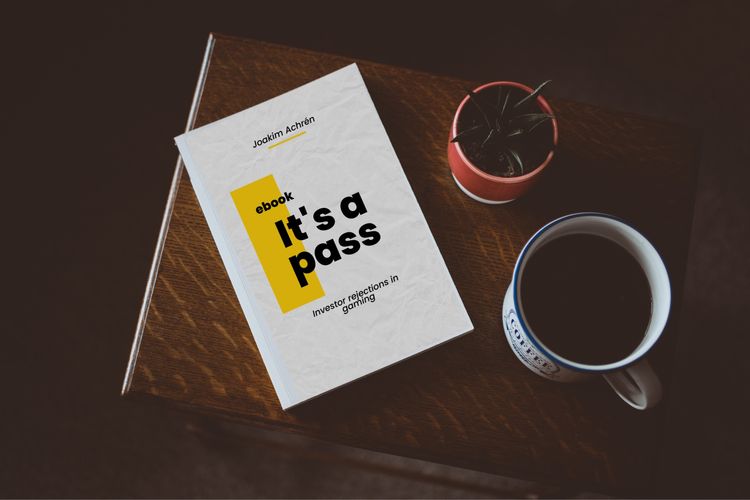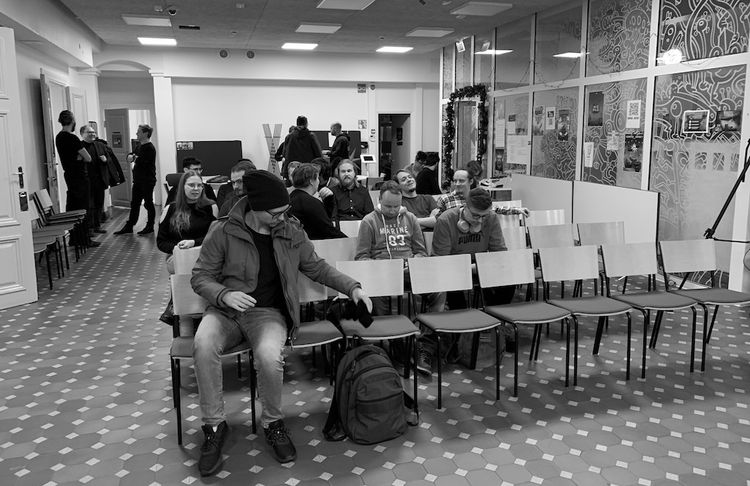Shareholders' Agreement

This is the Elite Game Developers Shareholders’ Agreement template, also known as SHA. To get the template, proceed to the end of this article. Note that I’d advise you to read this entire article, as it includes lots of helpful information.
This template is a copy of the Seriesseed.fi based Shareholders’ Agreement template. It is a valuable document that works well for a company that doesn’t yet have investors or has investors on board with convertible notes but hasn’t done a priced round. Use this when it’s still the founders who are owning the company.
Please note that this template has been built to abide by Finnish laws but should be very applicable for most European countries. To be sure of the document, you can pick up this template, modify it with your details and then ask your local lawyer to go through the document with you.
I asked Bird&Bird lawyer Kimmo Reina, who also created our Convertible Note template, to explain what are the main points that specifically apply to Finnish law and his response was:
“There are a few references to Finnish law (a reference to the Accounting Act in the definition of “Subsidiaries”; references to sections 8.1.2 and 8.2.1 to the Employment Contracts Act and section 17.2 to the Companies Act), which should at least be amended if this also applied in other countries. I would think that this would work 90-95% in other countries as well. Still, since each country always has its own legislation and because market practice differs somewhat from country to country, I would not recommend a shareholder agreement under the law of one country to use in another without the help of a lawyer. Startuptools.org has similar shareholder templates for founders in other Nordic countries, but I do not know of any similar templates for other countries.”
Kimmo Reina, Bird & Bird
The bottom line here is that it’s good practice to have a Shareholders’ Agreement in place from the start. This way, you will create safety for the future health of the company. I will highlight the main points in the below section on why a Shareholders’ Agreement is important from Day one.
Here’s a breakdown of all the clauses that come up in the document.
Adherence agreement, if the company is bringing on a new shareholder by one of the founders selling a part of their shares, the adherence agreement should be included in the schedule. After the new shareholder has signed the adherence agreement, they will become a part of this Shareholders’ Agreement. One typical example is when an employee exercises their stock options, they become a part of this agreement by signing an adherence agreement.
2.2.3 Subsequent Financing, meaning that you have a 2/3 majority of the shareholders voting for the financing to happen. This comes in handy if there are investors interested in financing the company, and the majority needs to say yes. You can also change this to 1/2 or 3/4. How do you vote? Send out an email asking for an OK from shareholders, with the question stated that are they in favor of new financing. If you get the majority to say OK, then the funding will proceed.
2.3 Dividend, making it clear that this startup will not pay dividends but will fuel future growth with all capital available.
3.1 Board, in Finland, it’s common to have three board members and zero deputy members. And you should have board meetings a few times a year.
4 Matters Requiring Founder Majority Consent, it’s good to remove some of the board rights at the early stages, including that the board can’t fire the CEO. Instead, the founders’ majority is needed for those kinds of decisions.
Dedication, Exit, Transfer of Shares, and Vesting and Purchasing Rights are all essential for keeping the founders dedicated to the company, working on making the company succeed, and not allowing any of the founders to leave the company with their shares. The idea with this “wall of text” is to close out all the loopholes that could happen. It’s worth it.
Here are some important ones to take note of:
7.3.1 Shareholders cannot sell or transfer their shares without Majority Consent. Six years is a reasonable time to wait until the shareholders can freely move their shares around. If you’d want, this could be an even more extended period, but it might not be necessary.
8.1.1 Vesting of shares means that the Founder does own the X amount of shares that are marked for them on the cap table, but they have “access” to the vested shares out of the X amount that they own.
The standard vesting schedule is four years, where the first 12 months, the Founder gets none of the shares vested. But a cliff event happens at 12 months, where the Founder receives 25% of their shares vested. Then, in every subsequent month, the Founder gets 1/48 of their shares vested. The result is that 100% will be vested after 48 months (four years). Note that when investors do a priced round and a new Shareholders’ Agreement is created, the vesting starts initially.
I’m repeating myself here: having vesting in place is healthy for the company as people will be motivated to stay with the company for an extended period and work for the company’s benefit. Recently, I’ve seen five-year vesting schedules with 24 months “cliff period” where 40% of the shares become vested at the two-year mark. This is even better, as two years will make sure that the founders are a good fit with each other and with the company, and they are going to stick around and work for the company.
9 Redemption Of Shares focuses on how the company buys back shared from the Founder in many different situations. Note that all of these are very important, and they close lots of loopholes.
22 Disputes and Governing Law, the template talks about Helsinki, Finland, so you want to state where your disputes will be settled. The whole clause 22 should be checked by a local lawyer so that it’s said correctly.
For signing, I highly recommend that you’d get a Docusign or something similar so that the signing process is as smooth as possible.
Schedule 1 This page focuses on capturing the list of shareholders. Both parts 1 and 2 should contain the same individuals when it’s the case that A) founders own the company and B) none of the founders owns the company through a business that they own. If you have shareholders who aren’t founders, i.e., advisors, you would leave them out from this list.
Schedule 2 This is the place where you write out the cap table. This should include all the people who are owners of the company. If you have shareholders who aren’t founders, i.e., advisors, you will include them here as cap table members so that you end up with 100% of the shares.
Schedule 3 If your company isn’t adding any new shareholders, you can remove schedule 3. Once you add new shareholders, you can add people with a copy of the Adherence Agreement.
Watch the video below for filling out the Shareholders’ Agreement.
To get our template and a copy of a filled agreement, you can use the form that’s below.





